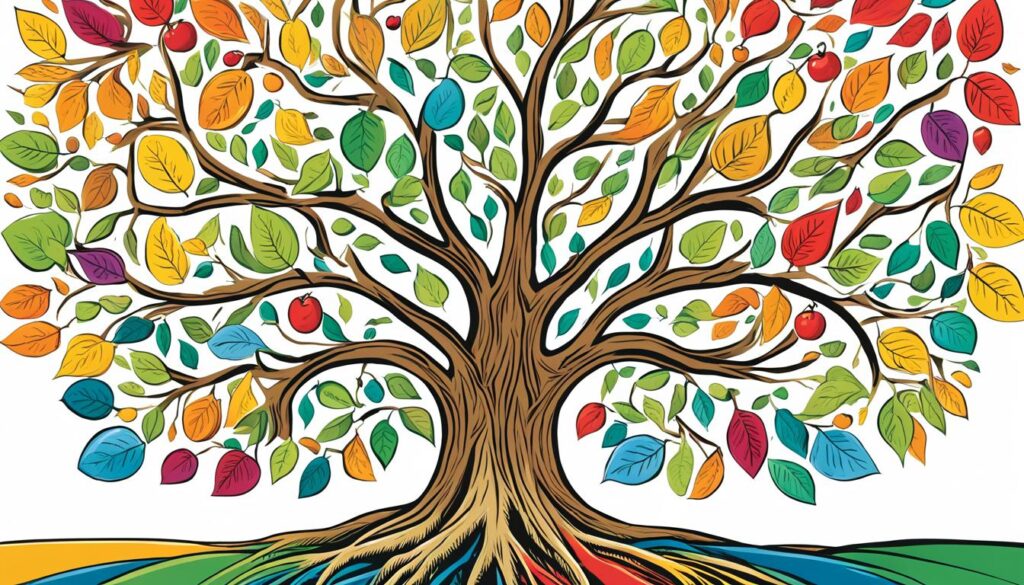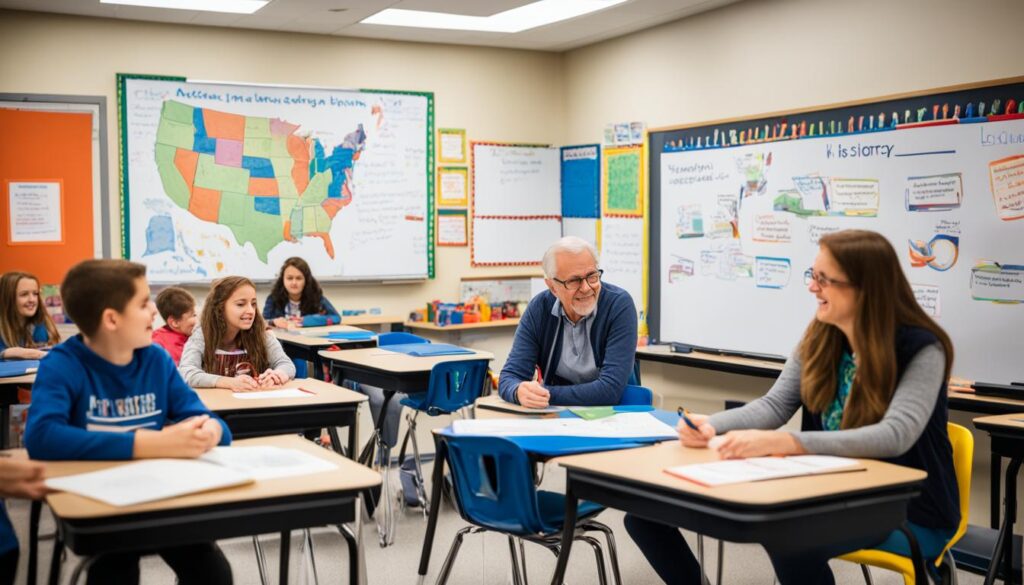Did you know the US spends over $730 billion on education every year? This shows how vital it is to understand the US education system. This guide will give you a detailed look at the key parts of education in America. You’ll learn about public and private schools, education policies, and how they affect students.

If you’re a parent, teacher, or just interested in how the US education system works, this guide is for you. It will help you understand the system better. This way, you can make sure students get the quality education they need.
Understanding the Structure of the US Education System
The US education system is diverse and complex. It includes both public and private schools. Public schools are funded by taxpayers and welcome all students in a certain area. They follow rules set by federal, state, and local groups. On the other hand, private schools run on their own and can choose how they teach, who they admit, and how they get money.
Schools across the country follow curriculum standards. These standards list what students should know and do at each grade. They help teachers plan lessons and check how well students are doing. Tests like state exams and the National Assessment of Educational Progress (NAEP) check how well students and schools are doing.

“The strength of the US education system lies in its diversity, where both public and private schools work together to provide a wide range of educational opportunities for students.”
Knowing about public and private schools, and how they use curriculum standards and tests helps parents and leaders make better choices. This supports students’ success all over the US.
The US Education System Explained
The US education system is complex, covering early childhood to higher education. It meets the needs of students with public and private school choices.
Primary and secondary education mainly use public schools. These schools are funded by state and local governments. They follow a standard curriculum and tests to ensure quality education. Private schools also exist, offering different educational paths and specialized courses.
After K-12, the US offers top-notch universities and colleges for higher education. Students can choose from many paths, like four-year colleges, community colleges, or vocational schools. This variety helps students match their education with their career goals.
“Education is the most powerful weapon which you can use to change the world.” – Nelson Mandela
Understanding the US education system can seem tough, but it’s key for making good education choices. By looking at all the options, people can reach their full potential and build a bright future.

Teacher Qualifications and Professional Development
In the US, having qualified and dedicated teachers is key. To become a teacher, one must meet strict certification and licensing rules, which differ by state. This usually means getting a bachelor’s degree, passing exams in specific subjects, and getting a lot of training in teaching and managing classrooms.
But it doesn’t stop there. Teachers must keep learning to improve their skills and know the latest in teaching methods and education trends. They do this by going to workshops, conferences, and joining learning groups. This helps them keep their teacher qualifications up to date and give their students the best education possible.
“The most important in-school factor for student achievement is the quality of the teacher.”
Teacher unions play a big role in fighting for teachers’ rights and growth. These groups make sure there are fair policies, good professional development programs, and a supportive place for teachers to work. By supporting their teachers, schools and districts can draw in and keep the best people, which helps the students a lot.
School Funding and Education Policies
Funding public schools in the U.S. is complex, with federal, state, and local funds mixed together. The federal government gives a big part of the funding through programs like the Every Student Succeeds Act (ESSA) and the Individuals with Disabilities Education Act (IDEA).
Federal Funding and Initiatives
The federal government’s funding role is key to making sure all students get a good education. Programs like Title I help schools with lots of low-income students. This way, the government tries to fix funding gaps and help schools that need it most.
State and Local Funding Sources
Most school funding doesn’t come from the federal government. It comes from state and local sources like property taxes and state budgets. This system lets schools respond to local needs but can cause big funding differences between rich and poor areas.

